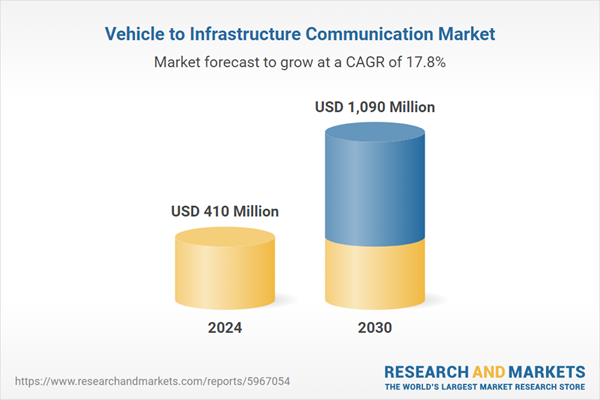Commercial Vehicles is the fastest growing segment, North America is the largest market globally
Speak directly to the analyst to clarify any post sales queries you may have.
10% Free customizationThis report comes with 10% free customization, enabling you to add data that meets your specific business needs.
Key Market Drivers
The increasing adoption of connected and autonomous vehicles fundamentally propels the Vehicle to Infrastructure communication market. These advanced vehicles rely on V2I capabilities to enable real-time data exchange with traffic signals, roadside units, and other critical infrastructure, facilitating enhanced situational awareness, cooperative maneuvers, and improved navigation accuracy. Such integration is essential for features like platooning, automated intersection management, and dynamic route optimization, which are central to the promise of intelligent mobility.Key Market Challenges
Substantial capital investment poses a significant impediment to the expansion of the Global Vehicle to Infrastructure Communication Market. Deploying and maintaining extensive V2I infrastructure, including roadside units, sensors, and communication networks, demands considerable financial outlay. This high upfront cost frequently deters both public sector entities and private investors from initiating or accelerating large-scale V2I projects. The prolonged timelines for return on investment further exacerbate this challenge, limiting the pace of infrastructure modernization.Key Market Trends
5G integration for ultra-low latency V2I communication is a pivotal trend in the Global Vehicle to Infrastructure Communication Market. The enhanced bandwidth and minimal delay of 5G networks facilitate complex, time-sensitive V2I applications, including cooperative perception and advanced driver assistance systems. These capabilities extend V2I functionality beyond basic alerts to automated driving. According to the 5G Automotive Association, over 300 million vehicles globally were cellular-connected by December 2024, forming a key foundation for advanced V2I. Ericsson, in an August 2025 publication, further highlighted that 5G Advanced connectivity demands upgraded transport infrastructure for ultra-low-latency communication and real-time coordination, driving significant network investment.Key Market Players Profiled:
- Qualcomm Technologies, Inc
- Robert Bosch GmbH
- Continental AG
- NXP Semiconductors N.V.
- Denso Corporation
- Thales Group
- Kapsch TrafficCom AG
- Harman International
- Cohda Wireless
- Autotalks Ltd.
Report Scope:
In this report, the Global Vehicle to Infrastructure Communication Market has been segmented into the following categories:By Component:
- Hardware
- Software
- Services
By Application:
- Cellular
- Wi-Fi
- DSRC
- WiMAX
- Bluetooth
By End User:
- Passenger Cars
- Commercial Vehicles
- Public Transportation
- Emergency Vehicles
- Others
By Region:
- North America
- Europe
- Asia Pacific
- South America
- Middle East & Africa
Competitive Landscape
Company Profiles: Detailed analysis of the major companies present in the Global Vehicle to Infrastructure Communication Market.Available Customizations:
With the given market data, the publisher offers customizations according to a company's specific needs. The following customization options are available for the report:- Detailed analysis and profiling of additional market players (up to five).
This product will be delivered within 1-3 business days.
Table of Contents
Companies Mentioned
- Qualcomm Technologies, Inc
- Robert Bosch GmbH
- Continental AG
- NXP Semiconductors N.V.
- Denso Corporation
- Thales Group
- Kapsch TrafficCom AG
- Harman International
- Cohda Wireless
- Autotalks Ltd.
Table Information
| Report Attribute | Details |
|---|---|
| No. of Pages | 181 |
| Published | November 2025 |
| Forecast Period | 2024 - 2030 |
| Estimated Market Value ( USD | $ 410 Million |
| Forecasted Market Value ( USD | $ 1090 Million |
| Compound Annual Growth Rate | 17.8% |
| Regions Covered | Global |
| No. of Companies Mentioned | 10 |









